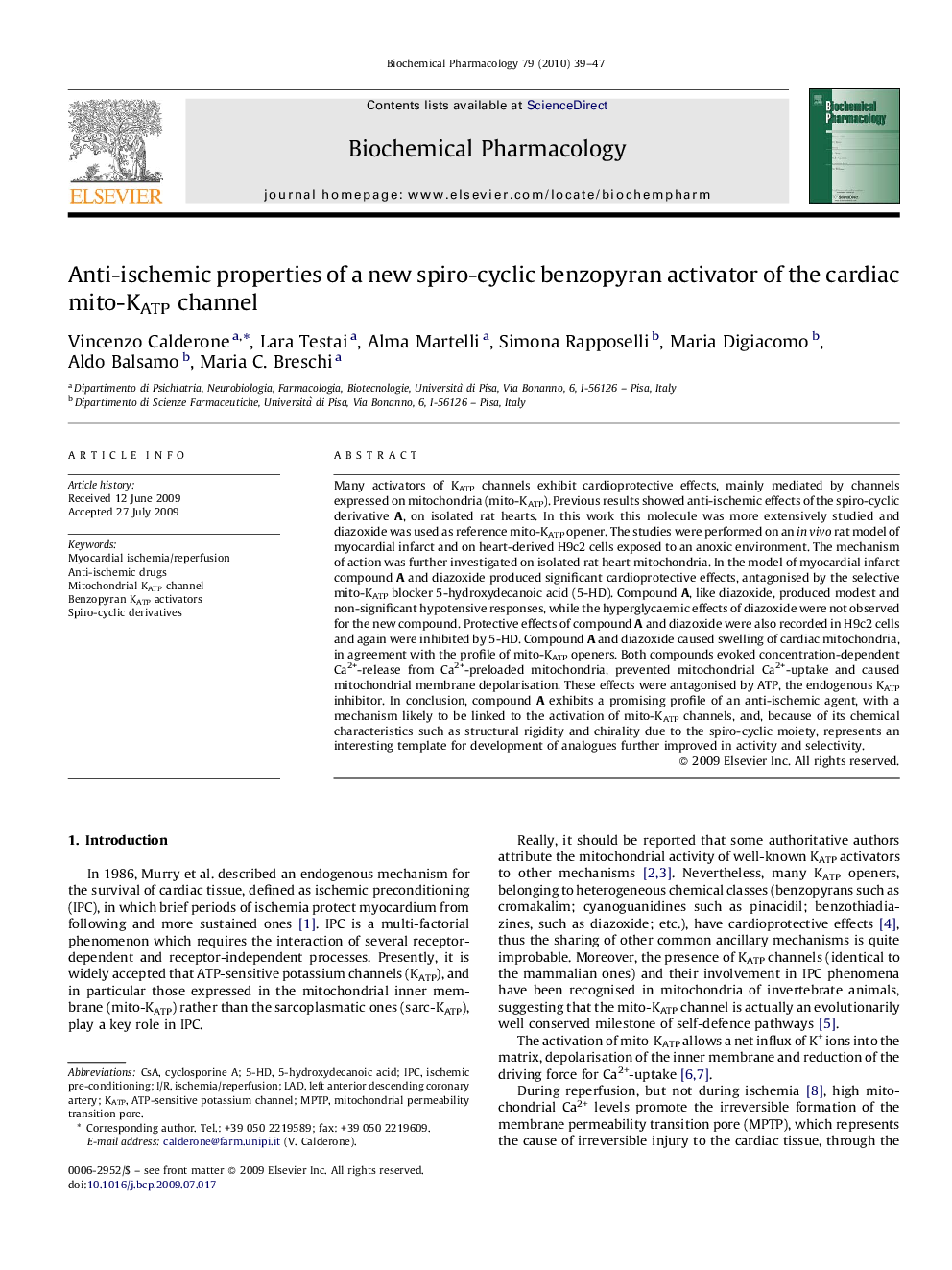| Article ID | Journal | Published Year | Pages | File Type |
|---|---|---|---|---|
| 5824102 | Biochemical Pharmacology | 2010 | 9 Pages |
Abstract
Many activators of KATP channels exhibit cardioprotective effects, mainly mediated by channels expressed on mitochondria (mito-KATP). Previous results showed anti-ischemic effects of the spiro-cyclic derivative A, on isolated rat hearts. In this work this molecule was more extensively studied and diazoxide was used as reference mito-KATP opener. The studies were performed on an in vivo rat model of myocardial infarct and on heart-derived H9c2 cells exposed to an anoxic environment. The mechanism of action was further investigated on isolated rat heart mitochondria. In the model of myocardial infarct compound A and diazoxide produced significant cardioprotective effects, antagonised by the selective mito-KATP blocker 5-hydroxydecanoic acid (5-HD). Compound A, like diazoxide, produced modest and non-significant hypotensive responses, while the hyperglycaemic effects of diazoxide were not observed for the new compound. Protective effects of compound A and diazoxide were also recorded in H9c2 cells and again were inhibited by 5-HD. Compound A and diazoxide caused swelling of cardiac mitochondria, in agreement with the profile of mito-KATP openers. Both compounds evoked concentration-dependent Ca2+-release from Ca2+-preloaded mitochondria, prevented mitochondrial Ca2+-uptake and caused mitochondrial membrane depolarisation. These effects were antagonised by ATP, the endogenous KATP inhibitor. In conclusion, compound A exhibits a promising profile of an anti-ischemic agent, with a mechanism likely to be linked to the activation of mito-KATP channels, and, because of its chemical characteristics such as structural rigidity and chirality due to the spiro-cyclic moiety, represents an interesting template for development of analogues further improved in activity and selectivity.
Keywords
Related Topics
Health Sciences
Pharmacology, Toxicology and Pharmaceutical Science
Pharmacology
Authors
Vincenzo Calderone, Lara Testai, Alma Martelli, Simona Rapposelli, Maria Digiacomo, Aldo Balsamo, Maria C. Breschi,
